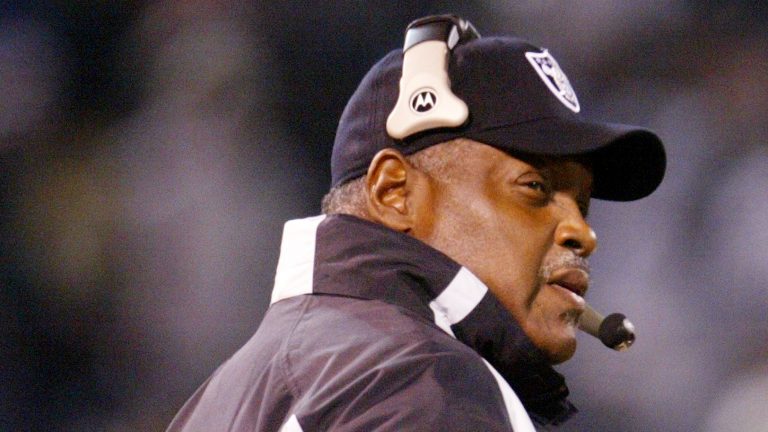The Shape of the NFL Head Coaching River
Why this matters
Progress, failure and patterns can be judged best by looking at the long term view of hiring in sports.
“You’ve got to know the shape of the river perfectly. It is all there is left to steer by on a very dark night…”
“Do you mean to say that I’ve got to know all the million trifling variations of shape in the banks of this interminable river as well as I know the shape of the front hall at home?”
“On my honor, you’ve got to know them better.”
–Mark Twain, Life on the Mississippi
With all five of the NFL head coaching openings filled and not a single African American hired, what do we now know? The recently published Global Sport Institute working paper titled Field Studies: A 10 Year Snapshot of NFL Coaching Hires tells us not to make much out of what happens in a single hiring year. Four white coaches have been hired – Mike McCarthy by the Dallas Cowboys, Matt Rhule by the Carolina Panthers, Joe Judge by the New York Giants and Kevin Stefanski by the Cleveland Browns – and one Latino, Ron Rivera by the Washington franchise. Unless there are further changes, the 2020-21 NFL season will begin with three black head coaches, one Latino and 28 white.
A single hiring season can represent a change in hiring numbers – factually more or less of a particular group – but not necessarily definitive diversity progress, failure or pattern. The first time I read the epigraph above was in William G. Bowen’s and Derek Bok’s book, The Shape of the River. That work painstakingly analyzed data on race and admissions from Ivy League institutions and looked to see what the long-term river or pipeline to academic success looked like. Those authors were concerned with what could be learned from years of data, not from a single moment. We can similarly learn much from a longer-term view of hiring in sports.
Progress, failure and patterns can be judged best by looking at the long term. We are beginning to take that look in a series we are calling Field Studies. This is the first of what will be many longer, deeper looks than have been taken previously, not just on diversity but on a variety of issues that we will share along the way. So how should you read our report against the hiring outcomes post-Black Monday? Here are some of the highlights:
Average Age. First, 56-year-old McCarthy is older than the 10-year-average white hire, which was 48.4. Rhule is 44. Rivera is 57. Coaches of color have been hired at the higher average age of 51.2, so that follows the pattern as well. The average age of all head-coach hires across our 10-year snapshot is 49.5. So, the younger white coach trend continues. This was amplified by the hiring of 38-year-old Judge and closing out with 37-year-old Stefanski.
Pro Playing Experience. Another continuing trend is that coaches of color tended to have professional playing experience while white coaches did not. Rivera, the lone person of color, is the only new hire who had a pro career. Among head coaches of color, 41.7% had NFL playing experience. This compares with 22.7% of whites with NFL playing experience and 9.1% of whites having no playing experience after high school. All people of color had at least some. Stefanski has an especially interesting path that includes all of the traditional non-NFL playing experience by whites but is unique with an Ivy League playing foundation.
College Head Coaching Experience. In terms of college coaching experience, Rhule continues the trend of white college head coaches getting this NFL opportunity, where coaches of color do not. In this ten-year period, no black college coach immediately went on to become an NFL head coach. For whites, 6.8% had been a college head coach immediately before this job.
Previous Position as NFL Head Coach. Among white coaches, 29.5% hired during the 10-year study were previously NFL head coaches. The percentage was 8.3 for coaches of color. In this round, one white coach (McCarthy) and one coach of color (Rivera) were previously head coaches. Over the long-term, coaches of color have received fewer second chances.
Never Hired a Head Coach of Color. We know that four teams had not hired a head coach or offensive or defensive coordinator of color: the Cowboys, Rams, Patriots and Saints. The Cowboys, by hiring McCarthy, continue their river. The Patriots and Saints have had long-term head coaches in Bill Belichick and Sean Payton, respectively.
Much is written about unconscious bias and how hiring decisions are made based on our own biases, even if unintended. By understanding the shape of the river, leaders can take note of these observations:
- that they are tending not to hire younger people of color.
- that there is the professional playing bias that narrows the pool by the decision-maker.
- that the college head coaching success has not served as the catalyst to the pro head coaching opportunities for African Americans.
- that second chances are given more frequently to white head coaches.
- that some have never hired a coach of color.
Overt racism is rare in sport hiring, but outcomes that imply different treatment based on race are still evident, as is the case here. In addition to complying with the Rooney Rule and simply interviewing a candidate of color, decision-makers must also ask, “Am I thinking as broadly about potential candidates of color as I am about white candidates?” The data in our Field Studies provides some guidance for that additional contemplation.
One NFL insider’s description of the Cleveland Browns’ hiring of Kevin Stefanski applies broadly as well: “His resume is impeccable, which matters … until it doesn’t.”
Kenneth L. Shropshire is the CEO of the Global Sport Institute and the adidas Distinguished Professor of Global Sport at Arizona State University and Endowed Professor Emeritus at the Wharton School, University of Pennsylvania.



